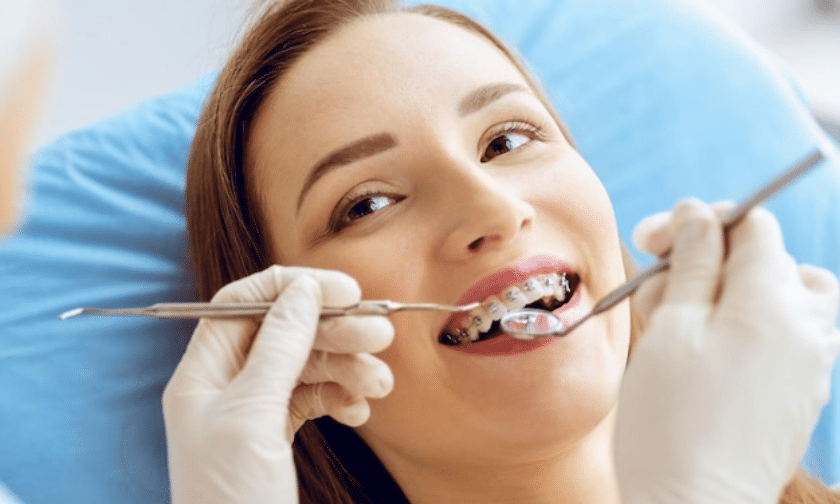Excitement About Legacy Orthodontics
Excitement About Legacy Orthodontics
Blog Article
The Legacy Orthodontics Statements
Table of ContentsSome Known Details About Legacy Orthodontics Some Ideas on Legacy Orthodontics You Need To KnowA Biased View of Legacy OrthodonticsIndicators on Legacy Orthodontics You Need To KnowSome Ideas on Legacy Orthodontics You Should Know
At Advanced Orthodontics, we give people with a holistic treatment experience. Furthermore, we provide flexible treatment timetables, versatile repayment alternatives and an enjoyable, pleasurable experience. orthodontist. Call ( 480) 357-4900 today to learn more and schedule a consultation.An orthodontist is a dental expert trained to identify, prevent, and deal with teeth and jaw abnormalities. They remedy existing problems and are trained to identify troubles that might develop in the future. Orthodontists function with individuals of any ages, from children to grownups. People typically associate an ideal smile with healthiness.
Malocclusion, or misaligned teeth, can result in oral issues, consisting of dental caries, gum tissue illness, and difficult or uncomfortable chewing. Not everybody is birthed with straight teeth. If you have a negative bite or huge rooms between your teeth, you may wish to get in touch with a dental practitioner concentrating on orthodontic care.
Legacy Orthodontics Can Be Fun For Anyone
( Image Credit Rating: DigitalVision/Getty Images) Orthodontists use dealt with and detachable oral tools, like dental braces, retainers, and bands, to change the position of teeth in your mouth. Orthodontic treatment is for dental irregularities, including: Misaligned teethBite troubles, like an overbite or an underbiteCrowded teeth or teeth that are too far apartJaw misalignmentThe goal of orthodontic treatment is to enhance your bite.
While you may assume of orthodontists as primarily for kids or teenagers who require braces, they can deal with dental issues at any age. Orthodontists participate in college, dental institution, and orthodontic institution.
, but not all dental professionals are orthodontists. They focus on two locations: Exactly how to properly and safely relocate teeth How to correctly direct development in the teeth, jaw, and faceOnce an orthodontist has completed training, they have the option to become board accredited.
Legacy Orthodontics - The Facts
Malocclusion leads to tooth congestion, a twisted jaw, or irregular bite patterns. Malocclusion is typically treated with: Your orthodontist attaches web metal, ceramic, or plastic square bonds to your teeth.
If you have just small malocclusion, you might be able to use clear dental braces, called aligners, as opposed to traditional braces (https://canvas.instructure.com/eportfolios/3201746/Home/The_Best_Leesburg_Orthodontist_Transforming_Smiles_Changing_Lives). Some individuals require a headgear to aid move teeth into line with pressure from outside the mouth. After dental braces or aligners, you'll need to use a retainer. A retainer is a customized device that keeps your teeth in area.
They can develop additional room in the mouth without having to pull teeth. Orthodontists utilize cords, surgical screws, or plates to sustain your jaw bone.
You may need to see an orthodontist if you have: Crowding or not adequate area for all of your teethOverbite, when your upper teeth come your base teethUnderbite, when your base teeth are also far forwardSpacing or issues with gapsCrossbite, which is when your top teeth fit behind your bottom teeth when your mouth is closedOpen bite or a vertical void in between your front bottom and upper teethMisplaced midline, when the center of your bottom and upper teeth don't line up Correcting a dental malocclusion can: Make attacking, eating, and talking easierImprove the balance of our face and your overall appearanceEase pain from temporomandibular joint problemsSeparate your teeth and make them easier to clean up, assisting avoid dental cavity or dental caries It's frequently a dental professional that initially notifications misaligned teeth during a regular exam.
Indicators on Legacy Orthodontics You Should Know

Throughout your very first orthodontic consultation, you'll likely have: A dental examPhotos taken of your face and smileDental X-raysPanoramic (360 level) X-rays of your face and headImpressions to develop molds of your teethThese tests will certainly assist your orthodontist understand exactly how to wage your treatment. clear braces. An orthodontist is a dentist who's had training to treat your teeth and jaw
Orthodontists may do surgery, exams,X-rays,and more to help you acquire a more comfy, healthier smile. An orthodontist is concentrated on your bite, so something like a damaged tooth would be handled by a dental professional. Orthodontists are dental professionals however not all dentists are orthodontists. Orthodontists are focused on your bite, or the means your teeth fit together, and the straightness of your teeth.
Ever questioned just how celebrities constantly seem to have completely straightened teeth? Orthodontists are dental professionals who focus on fixing abnormalities in the teeth and jaws.
Some Known Incorrect Statements About Legacy Orthodontics

While dental braces are the most typically acknowledged orthodontic therapy, orthodontists have a varied toolkit at their disposal. The particular technique selected relies on the intensity of the situation, the patient's age, and individual choices. These reliable dental braces make use of a system of braces adhered to the teeth and connected by cables.
These detachable trays are tailor-made to progressively shift the teeth's placement. In situations of narrow jaws, palatal expanders can be used to create area for correct tooth alignment.
Report this page